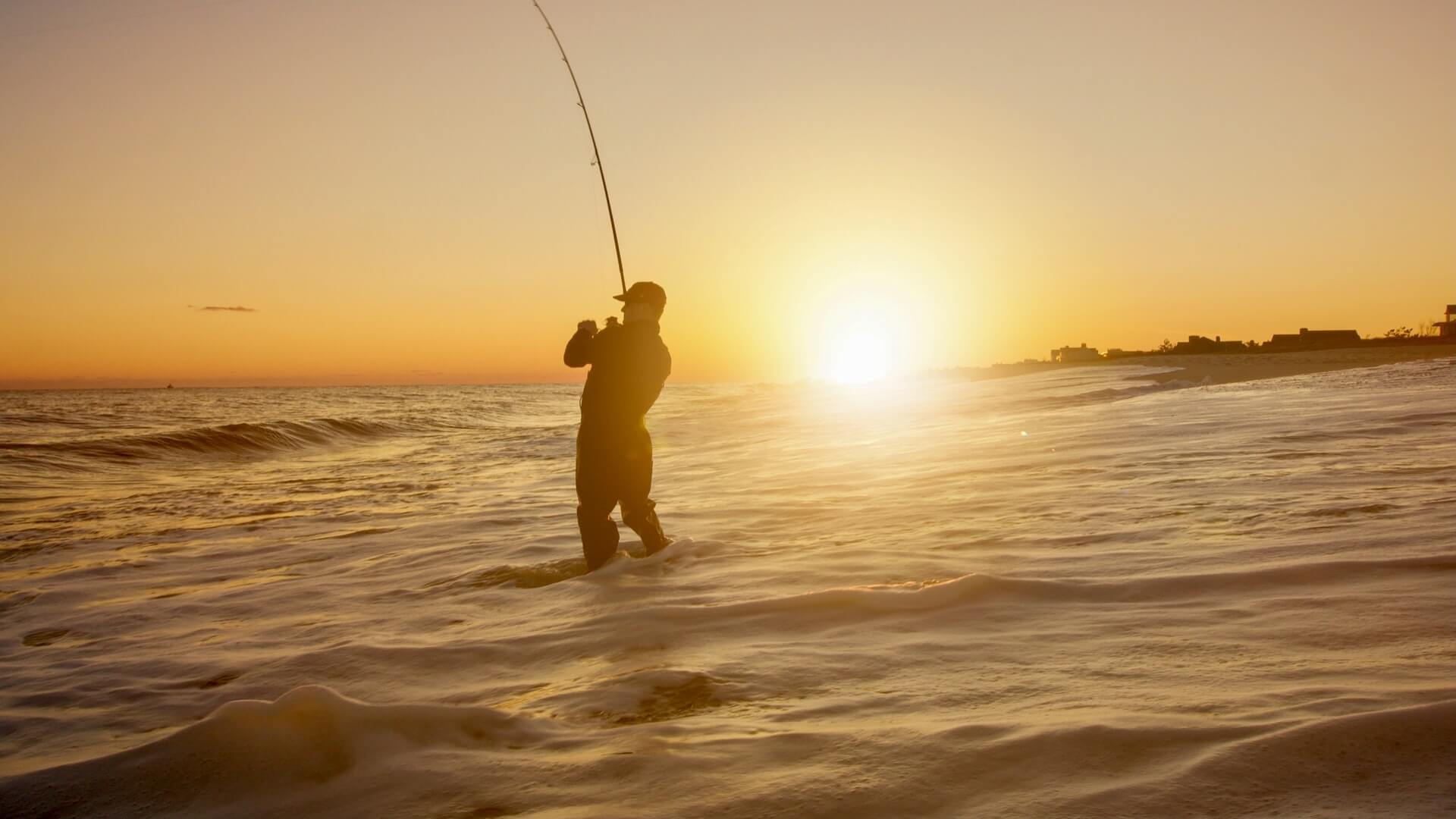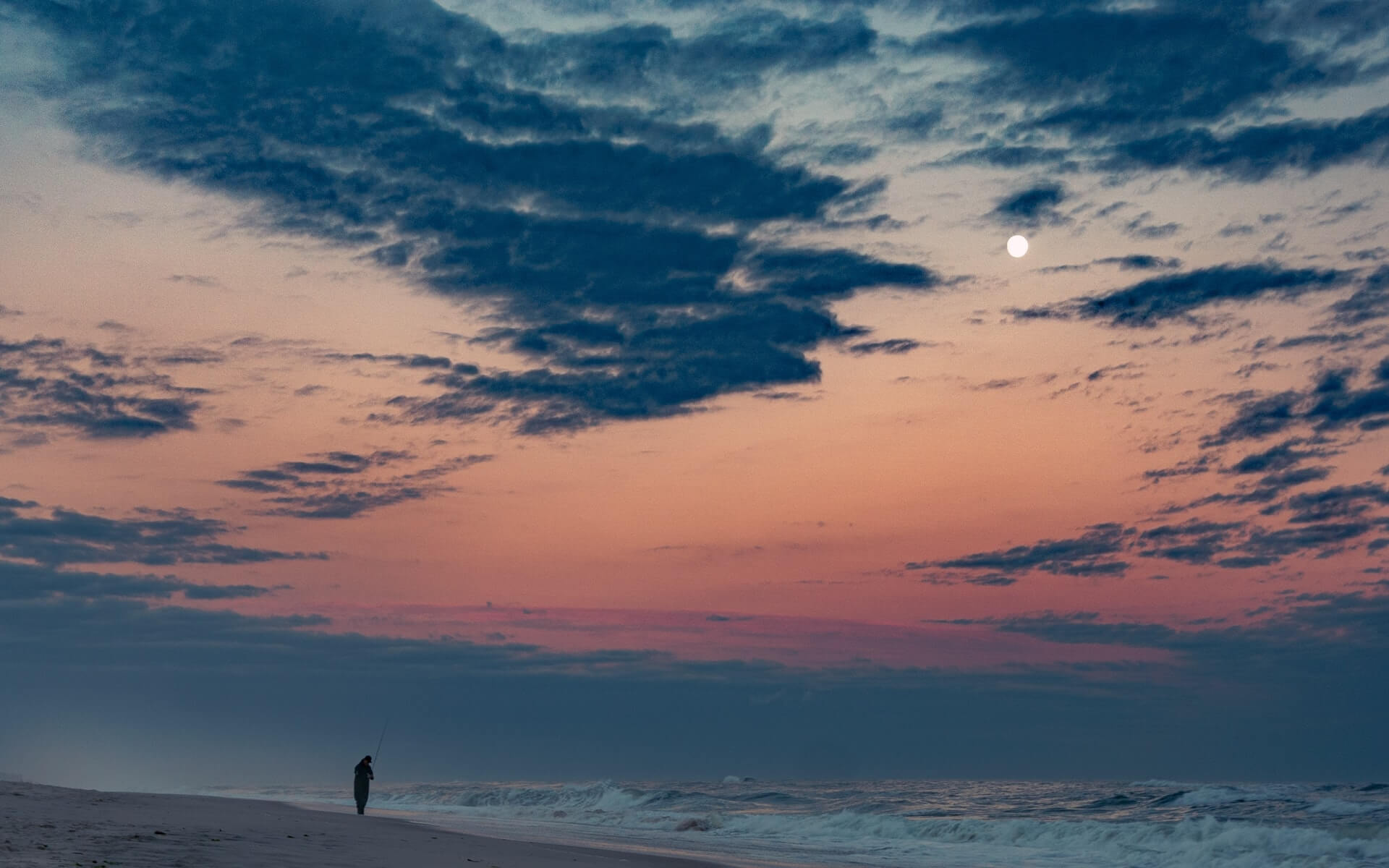
This fishing technique intended for practices at sea has been one of the most popular for all practitioners since the edge. Its English nameSurfcasting surf means breaking waves and casting means casting. So the aim is to be able to cast in the waves, but above all to be able to stay there to fishing as efficiently as possible.
So we're going to introduce you to the principle of technique, even if it seems within everyone's grasp, it offers a major opportunity for improvement if you want to stand out from the crowd once the lines in search of bar ,, wolf or sea bream with bait.
We will then give you an overview of lines the equipment you will need to practice this technique. Whether it's the rod, the reel, the line, the choice of thehook or the luggage, we'll take a quick look at the main points you need to know.
Finally, we will see the spotlights we'll also look at the best times of day to practise, as well as the time of day or low or high tide when it's important to do so. Finally, we will see that this fishing Surf Casting can choose from a wide range of species of fish as the labrax, the dab, the sar, or the sole for the France.
The principle of the technique
First of all, it should be pointed out that this technique has only been practised since edge. It is generally performed either from the beach or for structures such as a dyke, jetties or pontoons.
The aim is to throw your assemblies, so that you can easily place your weight in waves, it can be used on a shoal, a pit or in areas around oyster beds. The main thing is to allow you to deposit your bait in areas where there is activity, particularly from forage fish.
Le choice of the zone will therefore be very important, directly affecting the success of your fishing. You'll have the chance to catch a multitude ofspecies different. The technique can be practised all year round, in all seasons, with the only limits being the weather conditions and the time you can devote to it.
The equipment
.jpg)
La rod is the first element that it is important to choose carefully for the fisherman. Sa length, his power and its construction will need to be inspected so that you can feel confident about these aspects from your very first outing.
For the length, it will be between 3m90 and 5m. The more spotlights you're fishing will require long casting distances, the more important it will be to take a good cast long length. In general, you'll turn to 4m20 to 4m50. The fishermen from dam can opt for series in 3m90 when we can reach 6m for very specific situations, and in particular to abroad.
La power will depend on the spot you're on. Generally speaking, for peaches on french coasts start on 100 to 250g. This will enable you to cover the different types of currents and locations of fishing of the north Sea to the mediterranean.
Finally, for canes, there are two types of scions, hybrid or otherwise. The choice will depend on the strength of the waves and their size. We'll tend to go more for hybrids for ocean practices, and the opposite for the sea mediterranean.
For the reel, the most important thing is to choose a model that is of course resistant to watersalt water and is capable of receiving a quantity of nylon or line type braid big enough to throw far. When you propel your assembly more than 100m away, this is essential.
You will generally find coils between 5500 and 14000 at When it's 35 or 45 at . The height of the coil and its surface will be the two elements that characterise them.
Other more techniques are taken into account in the choice of your reel. La brake power, , winding slow nylon or the clutch disengagement of the reel can be viewed, but only at a later stage.
Where and when can you surfcast ?

You are now equipped with your new equipment and you have the technique in mind. All you have to do now is go to the waterfront and make your first fishing. But you're bound to ask yourself where and when you should go so that you don't come back without a touch and a feel fish.
If you have friends or acquaintances fishermenNow is the time to contact them. Even if locations from fishing can sometimes be a huge secret for many fishermen, you'll usually be able to glean some useful information about a place to set up your first home assemblies.
La sea or the ocean both have places that are notable for the presence of fish. You should start with this, to eliminate any doubts about where to practice. Target the baïnes, the riprap, the pits, the proximity of oyster beds or Wrecks if you have any to hand.
The ideal position will surely come with time and more outings. You will learn from each of your successes or failures if you ask yourself questions after each outing.
When is a little more complicated. You'll hear completely opposite views being put forward, each with different experiences of its own practices and of locations practices.
Night or day, experience shows that night-time practice is more conducive to success than day-time practice. The end of the day and at night are often much more effective than during the day. There are no great explanations to be offered, as this remains an observation that is not based on biological data that could be verified.
As far as the tides are concerned, this will depend on where you are sailing. On the seas with slight tidal movements, the impact is less significant than on the ocean, which can vary by several metres, covering and uncovering the foreshore, with its biotope coming to life.
Visit sea, you can extend your fishing. At the ocean, we prefer the hours around sunset open sea, the tide can be set at any time of day, or it can be raised from low tide for the 6 hours it lasts. This makes for easier installation and allows more water to cover your boat assembly and its hook, the fish as the tide rises.
In conclusion, what is surfcasting ?
Beyond all the details techniques, the surfcasting is above all a fishing it's a great way to combine family life on the beach with your passion for sailing. It allows you to combine family life at the beach with your passion for sailing fishing.
It's a chance for everyone to spend some time together and to introduce the more adventurous to the world of music young people fishing, but also to the life of the foreshore, which is one of the richest and most fragile areas of our coastline.
You might like to read :
- What equipment do you need for surfcasting ?
- What techniques are used for surfcasting ?
- What tide for surfcasting ?
